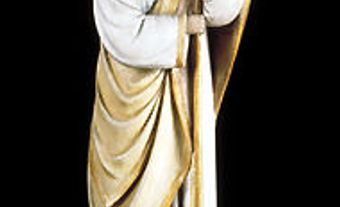Sullivan, Françoise
Françoise Sullivan, sculptor, painter, dancer and choreographer (b at Montréal 10 Jun 1925). Sullivan studied at the École des beaux-arts de Montréal between 1941 and 1945. She was selected by the art historian Maurice Gagnon to be in the exhibition Les Sagittaires at the Dominion Gallery in Montréal in 1943, a show considered to be instrumental in the formation of the AUTOMATISTES group. Sullivan became a professional dancer in 1945 and began to explore choreography. She went to New York in the fall of 1946 to study modern dance with Franziska Boas, daughter of the anthropologist Franz Boas, and briefly with Martha Graham and Louis Horst. Once there, she organized an exhibition of works by the Automatistes at the Boas studio.
Explorations
Sullivan published an essay on dance in the REFUS GLOBAL manifesto in 1948 in which she stressed the importance of the spontaneity of emotions and the expression of internal energy revealed by the subconscious. An innovative dancer and choreographer, Sullivan and fellow dancer Jeanne Renaud completely modernized dance as it was practised in Montréal at that time. Her performance "Dance in the Snow" (February 1948) in the fields of Saint-Hilaire anticipated the contemporary practice of staging dance events in unconventional settings. From 1952 to 1956 she choreographed and danced for CBC television. The ballet Rose Latulippe (1953), adapted from a legend related by Philippe Aubert de Gaspé, is one of her notable television successes. In New York, inspired by African and Hindu dance, her choreography displayed natural movement of the whole body, simple gestures near the floor, bare feet, simple costumes and automatic reflexes.
Sculpture as Choreographic Movement
Sullivan married the painter Paterson EWEN in 1949 and eventually, as added family responsibilities made dancing more difficult, decided to move away from dance toward a new involvement with art. Attracted by the technique of welded metal, she decided to become a sculptor. Sullivan received encouragement and advice from the sculptor Armand Vaillancourt and studied welding at the École technique de Lachine. Her sculptures were frequently conceived as choreographic movement seen from a bird's-eye view, and the folded metal of her compositions generally followed the form of a spiral.
Sullivan created a monumental sculpture for EXPO 67 and, at the end of the 1960s, began to experiment with Plexiglas sculpture. In the early 1970s during a stay in Italy, she undertook some conceptual art projects and after 1976 began a collaboration with the sculptor David Moore. The 1980s were marked by a return to painting on irregular canvas support. Frequent stays in Crete have inspired a new thematic approach in a series on antique myths. During the course of her teaching tenure (since 1977) at the Department of Visual Arts and Dance at CONCORDIA UNIVERSITY, she has created new choreographic works for independent dancers. Sullivan was awarded the Paul-Émile Borduas Prize in 1987 and was the subject of a retrospective exhibition at the Musée des beaux-arts de Montréal in 2003. In 2005, she won a Governor General's Award in Visual and Media Arts for her artistic achievements.

 Share on Facebook
Share on Facebook Share on X
Share on X Share by Email
Share by Email Share on Google Classroom
Share on Google Classroom


